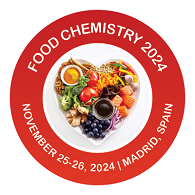
Memona Saeed
University of Agriculture Faisalabad, Pakistan
Title: Effect of Light on laying and hormone regulation in laying birds
Biography
Biography: Memona Saeed
Abstract
In modern poultry houses, artificial illumination often serves as the sole source of light for birds. Therefore, the duration, intensity, and quality of this light become crucial environmental factors, as they significantly influence both the reproductive and productive systems of domestic fowl. The impact of light on biological activities related to egg production is well-documented. Light quality can be assessed based on two main criteria: dose intensity and spectral quality.
For birds from subtropical and temperate regions, increased egg production is observed with photo stimulation, whereas a reduced photoperiod leads to delayed or decreased production. Additionally, light intensity is critical in rearing birds because they require a specific intensity to be effectively photo stimulated. Like humans, chickens can see within a narrow part of the light spectrum (380 to 760 nm). Besides their eyes, birds possess active extra-retinal photoreceptors located in various parts of the brain, which play a role in photo stimulation transduction.
Photo stimulation’s effects, influenced by different wavelengths, have been studied in chickens, turkeys, sparrows, ducks, and quail. Generally, red light effectively stimulates egg production, whereas green or blue light has little to no effect. In commercial layers, during their first and second laying seasons, the total egg production was significantly affected by light color, with the highest number of eggs produced under red light treatment. However, eggs laid under blue or green light were consistently larger than those laid under red light.
In multi-deck housing systems, layers in lower deck cages are not exposed to the same light intensity as those in upper cages. To address this, the use of LED lamps installed at the top of each cage was considered.

